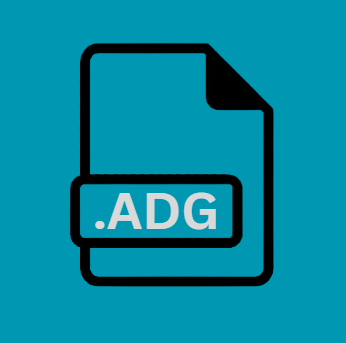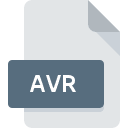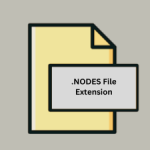.ADG File Extension

Ableton Device Group
| Developer | Ableton |
| Popularity | |
| Category | Audio Files |
| Format | .ADG |
| Cross Platform | Update Soon |
What is an ADG file?
.ADG files are digital audio workstation (DAW) project files created by Ableton Live, a popular music production software. These files store music compositions, audio recordings, MIDI data, and settings.
More Information.
Developed in the early 2000s, .ADG files aimed to streamline music production workflows. They allowed artists to save their work, collaborate, and experiment with various sounds and arrangements.
Origin Of This File.
Introduced by Ableton Live, .ADG files became a standard format for saving and sharing music projects, offering a versatile platform for electronic music producers.
File Structure Technical Specification.
.ADG files primarily contain references to audio clips, MIDI data, effects, and instrument settings. They are saved in XML format, making them human-readable and editable.
How to Convert the File?
Windows:
- Using Software:
- Determine the file format you want to convert your document into (e.g., PDF, DOCX).
- Download and install a suitable document conversion software or application. Many options are available, both free and paid.
- Open the conversion software.
- Use the software’s interface to open the document you want to convert.
- Select the desired output format (e.g., PDF, DOCX) and specify the output location for the converted file.
- Click the “Convert” button to start the conversion process.
- Once the conversion is complete, you can access the converted document in the location you specified.
Linux:
- Using Command Line Tools:
- Open your terminal emulator on Linux.
- Depending on the desired output format, you can use command-line tools like “unoconv” for document conversions (e.g., to PDF, DOCX).
- Run the appropriate command, specifying the input document and the desired output format and file name.
- The converted document will be generated in the current directory.
Mac:
- Using Built-in Applications:
- On macOS, you can often convert documents to other formats using built-in applications.
- For example, to convert a document to PDF, you can open it with the Preview application.
- In Preview, go to the “File” menu, select “Export as PDF,” and follow the on-screen instructions to save the converted document to your preferred location.
Android:
- Using Android Apps:
- Visit the Google Play Store on your Android device.
- Search for and install an app that supports the conversion of documents to your desired format (e.g., PDF, DOCX).
- Launch the installed app.
- Use the app’s interface to open the document you want to convert.
- Select the format you wish to convert the document into.
- Follow the app’s instructions to complete the conversion process.
- Once the conversion is done, you can access the converted document within the app or in your device’s file storage.
iOS:
- Using iOS Apps:
- Go to the App Store on your iOS device.
- Search for and install an app that supports the conversion of documents to your desired format (e.g., PDF, DOCX).
- Launch the installed app.
- Use the app’s interface to open the document you want to convert.
- Choose the format you want to convert the document into.
- Follow the app’s instructions to complete the conversion.
- Once the conversion is finished, you can access the converted document within the app or in your iOS device’s file storage.
Advantages And Disadvantages.
Advantages:
- Structured Data: .ADG files are designed to store data in an organized manner, making it easy to access and manipulate.
- Compatibility: They are often compatible with specific software applications, ensuring data consistency and integrity.
- Configurability: .ADG files may contain configuration settings that allow users to customize software behavior.
- Data Preservation: They are useful for saving project-related data, ensuring data continuity across sessions.
Disadvantages:
- Limited Software Support: .ADG files may only be opened and edited using specific software applications.
- Compatibility Issues: Older or unsupported software versions may not recognize newer .ADG file formats.
- Complexity: Understanding the internal structure of .ADG files may require technical expertise.
- Security Concerns: If not properly encrypted, .ADG files may pose security risks if they contain sensitive data.
How to Open ADG?
Open In Windows
- Install Ableton Live on your Windows PC.
- Double-click the .ADG file to open it in Ableton Live.
Open In Linux
- Install Ableton Live using Wine or use a Linux-compatible DAW like Bitwig Studio.
- Open the .ADG file in the chosen DAW.
Open In MAC
- Install Ableton Live on your Mac.
- Double-click the .ADG file to open it in Ableton Live.
Open In Android
- Export the project as a compatible audio format (e.g., WAV or MP3) using Ableton Live on your computer.
- Transfer the audio file to your Android device.
- Use a music player or a DAW app compatible with the chosen audio format to open and play the file.
Open In IOS
- Export the project as a compatible audio format (e.g., WAV or MP3) using Ableton Live on your computer.
- Transfer the audio file to your iOS device.
- Use a music player or a DAW app compatible with the chosen audio format to open and play the file.
Open in Others
- Export the .ADG project as a standard audio format (e.g., WAV, AIFF, or MIDI) using Ableton Live on your computer.
- Use DAWs, music players, or software compatible with the chosen audio format to open and work with the file.













